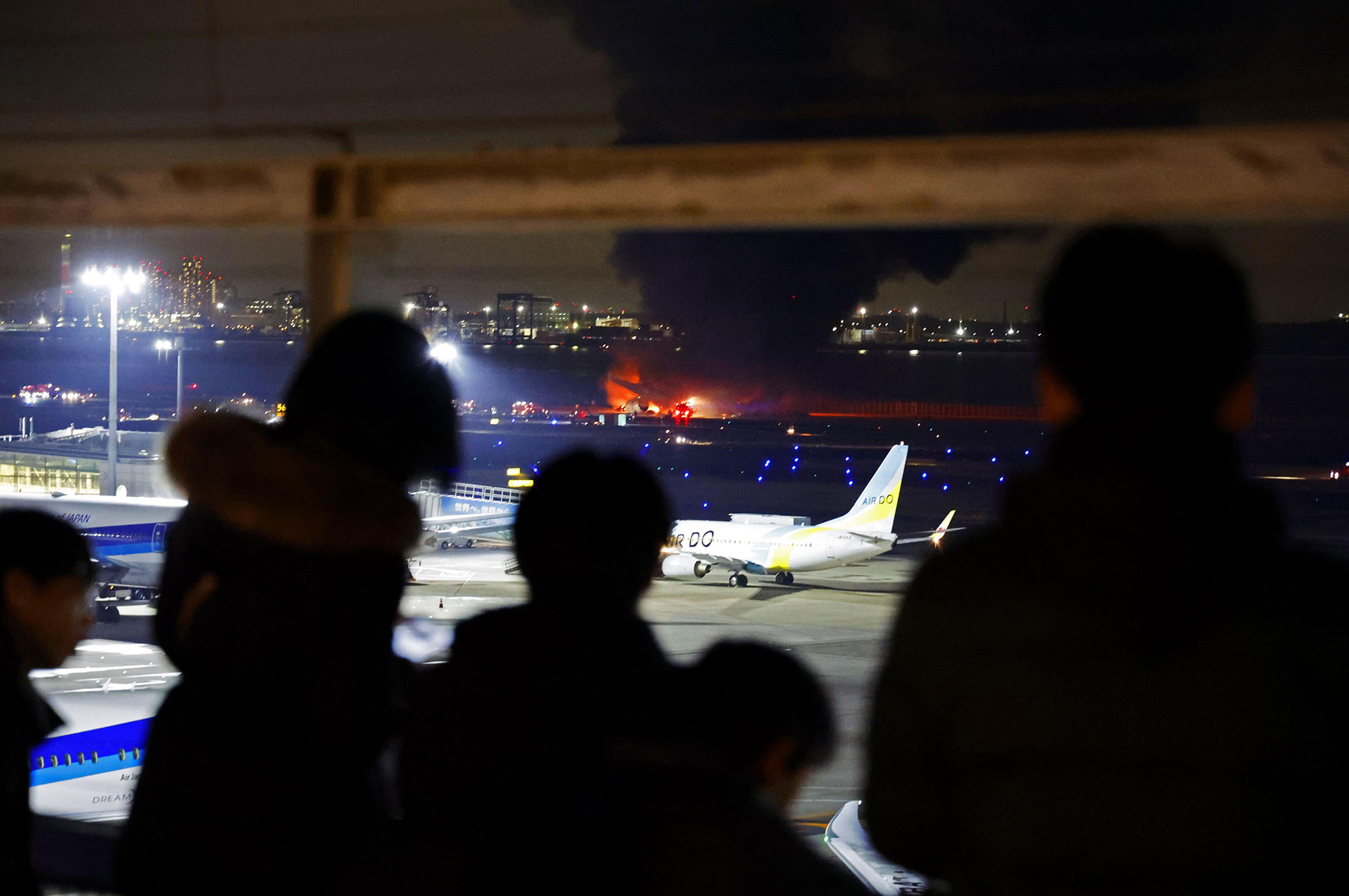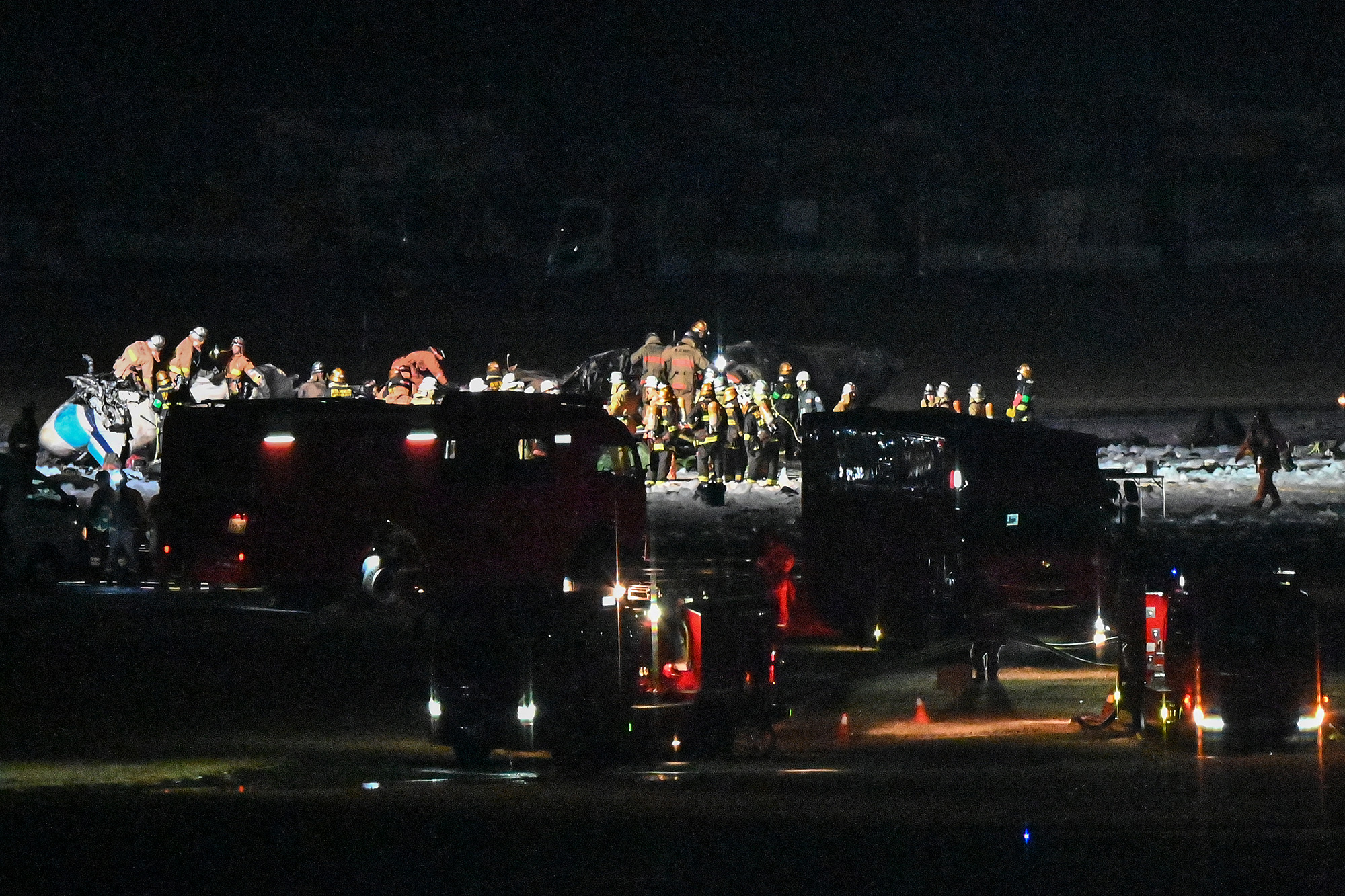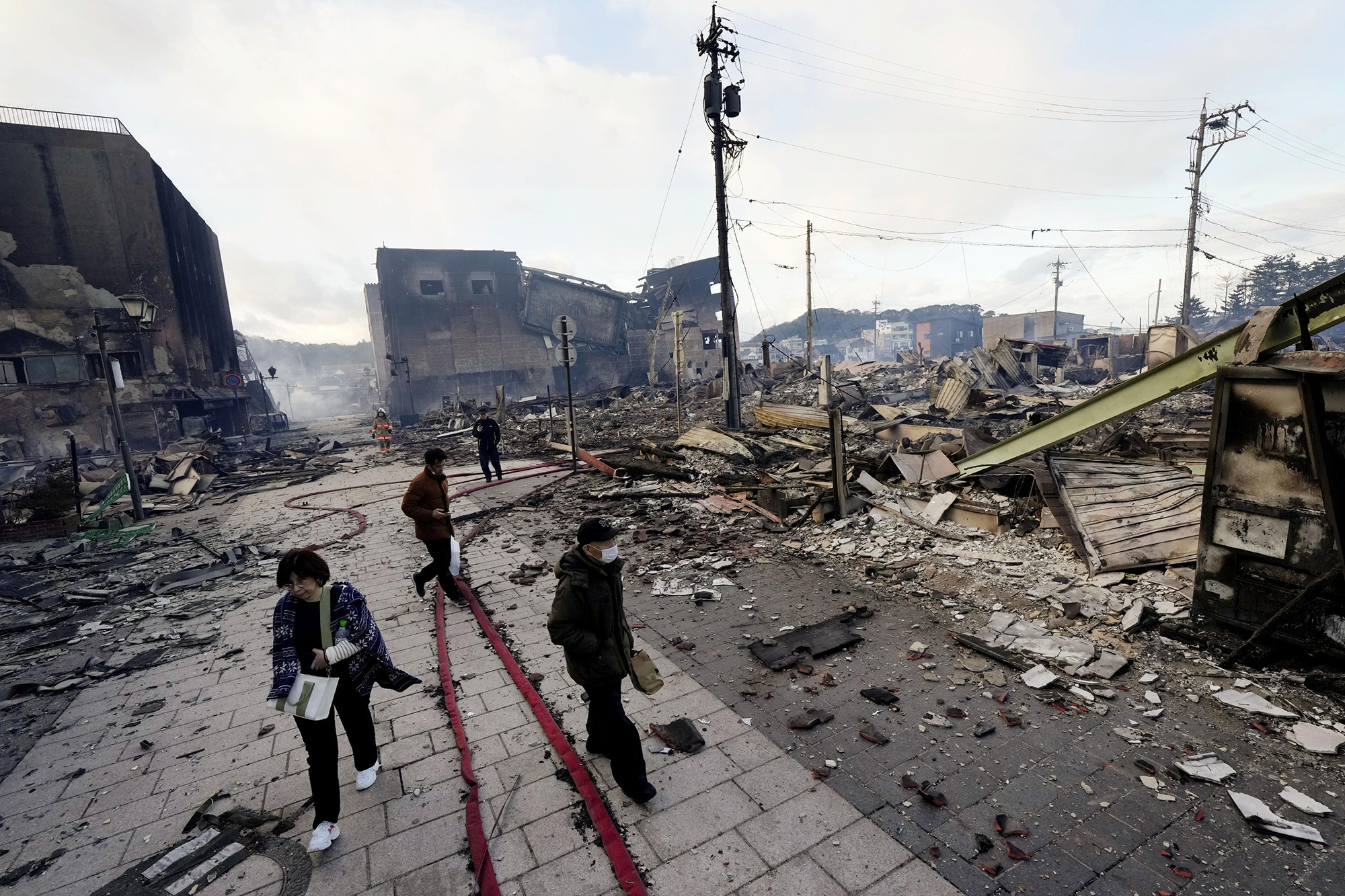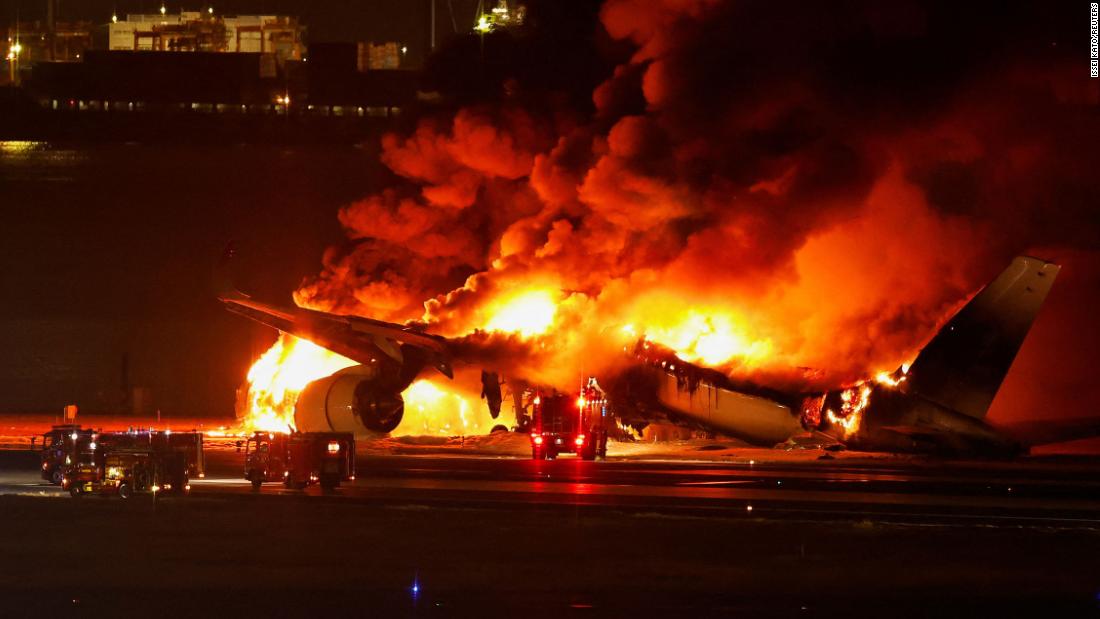A powerful earthquake with a magnitude of 7.6 struck western Japan on Monday, killing at least 65 people and injuring over 300 others. The epicenter was located near Noto peninsula in Ishikawa prefecture, causing widespread damage to homes and infrastructure. Rescue teams are working tirelessly against the clock to save those trapped under rubble before heavy rain and landslides further hinder their efforts.
The quake set off tsunami warnings, resulting in waves over 1 meter (3 feet) high in some areas. As of Wednesday morning, nearly 130 requests for rescue had been recorded with many more expected to be unreported. Japanese Prime Minister Fumio Kishida has urged emergency services to act swiftly as there are still many reports of people needing rescue.
The city of Wajima on the northern tip of Noto was cut off from land routes, while Suzu in Ishikawa prefecture experienced nearly complete destruction of homes. Nearly 33,000 people have been displaced and are currently staying at evacuation centers. Relief officials have distributed water, blankets, food and other supplies to those affected.
Search dogs joined military personnel and firefighters in their efforts to find missing individuals amidst the rubble. The exact number of missing persons remains unclear due to conflicting reports from different sources.
The first 72 hours are critical for rescue teams, who must work quickly against time before cold weather sets in. Temperatures are expected to drop as low as 4 degrees Celsius (39 degrees Fahrenheit) overnight, posing additional challenges for those still trapped under debris.
Ishikawa Gov. Hiroshi Hase has encouraged everyone to use masks, antiseptic and soap to guard against the spread of infectious diseases as evacuees shelter together. Ensuring adequate water supplies and toilets for those who were displaced is a priority.
The quake reminded many residents of the devastating earthquake and tsunami that killed 18,000 people in Fukushima back in 2011. Japan is one of the most seismically active nations on Earth due to its location on the Pacific Ring of Fire where tectonic plates meet.
The constant threat of earthquakes has led Japan to develop world-class tsunami warning systems, which have proven effective during this disaster.







